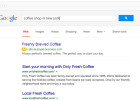5 Ways to Drive Traffic to Your Infographic
Small business owners and entrepreneurs are always on the hunt for ways to differentiate their marketing. One of the biggest trends, in recent years, has been to create high-quality traffic on a business’ website and use that content to attract visitors. With everyone and their mother blogging, it’s becoming more important to diversify your content with more than just text. That has made infographics increasingly popular for small businesses and startups.
So you create your first infographic, and now what? Unfortunately, creating the infographic is only the first step. What you need to focus on now is how you’re going to promote it and generate traffic. A common misconception with infographics is that they just automatically go viral. Unless you’ve got a huge following like Taylor Swift or Justin Bieber, simply sharing the infographic in a Tweet isn’t going to cut it.
In order to get your infographic out there, you’ve got to do some behind-the-scenes work to get the audience you want. Follow these five tips for generating traffic to your infographic.
Give It a Place to Live
First and foremost, your infographic needs a home. Pick a home URL for the infographic that your followers can link back to. This will help with SEO and give readers a way to get back to your site, in order to check out what else you have to offer them.
When setting up a home base for your content, you want to make sure that your viewers can easily identify what the purpose of your infographic is. You want them to be able to understand what information they’re about to receive almost immediately, so it’s important to make sure you have the right keywords in the right places.
You should also add an embed code to the infographic. This will encourage readers to embed it to their site, and create a natural link back to your page.
Share It on Social Media

Image via Flickr by Jason A. Howie
You want to promote your infographic heavily on all social media networks. By posting statuses, sending Tweets, and sharing on Pinterest and Instagram, you’re only increasing the chances of your content being seen. The most important thing is making sure you post on as many platforms as you can. Sharing on just Facebook and Twitter is not enough. It’s vital that you also share it on blogs, and sites such as Flickr as well. Surprisingly, Pinterest is one of the most popular places for infographics.
Reach out to friends, colleagues, and family members, and ask for their help. Even if you can only get a few people you know to share it in the beginning, that still helps get its existence out onto the web. Your early results will be in direct relation to the amount of effort you put into sharing and promotion. In the beginning, it’s up to you to build momentum. However over time, the snowball effect will happen and you can step away, allowing your readers to do the sharing for you.
Target Influencers
If you’re looking to set a trend with your infographic, then it’s obvious that you’ll need the help of trendsetters themselves. Make sure you target influencers that you hope will share your content with their audiences. It’s imperative that you try to narrow down who would be interested in sharing your content, as well as who it has relevance for.
You’d be surprised at how willing some well-known influencers are to share the content of others. Don’t be afraid to tag them directly to get their attention. You won’t know unless you ask!
Reach Out to Bloggers
Bloggers share content. So it only makes sense to see if they’ll share yours. By reaching out to bloggers who have already shared infographics within the same niche as yours, you may find a few who are willing to help get your infographics in front of their viewers.
If you’re able to find a few bloggers who will share your infographic, you’re opening the door to a totally new world of traffic and potential readers. Remember, the more bloggers you reach out to, the better chance you have of someone saying yes.
Submit to Directories
You might not realize it, but there are a number of directories dedicated to infographics that you may be able to get your content on. Sites like Visual.ly and Daily Infographic are a few to look into, with countless others to check out. Getting your infographic up on a site like these will really help to generate some traffic and also inspire you to create your next infographic.
The bottom line is, the more places your infographic is placed on the web, the more likely it is to be seen. More visibility leads to even more shares and generates the traffic you want. So get out there and push your infographic. If you’re willing to put in the time and effort, your content will reach its full potential!
Derek Miller is a content marketing consultant for CopyPress. CopyPress is a leading digital content production company, specializing in articles, infographics, interactives, and videos. For content marketing advice and more information about our capabilities, visit CopyPress.com.




